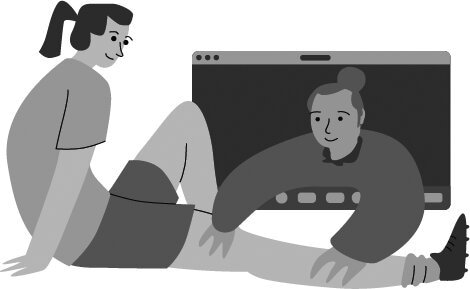Senior Annika Shah walks through the back door of the Perry Family Center Gym. She stands in silence, overlooking a sea of empty bleachers — the bleachers that were once filled with crowds cheering her on as she made the game-winning shot. However, Annika she is left with a smiliar problem that all athletes face today which is finding a training space and available trainers as much has closed down due to the COVID restrictions put in place.
Shah said the COVID-19 shelter-in-place has both helped and hurt her recovery.
“Coming off an injury my junior year, it was nice to have extra time to do physical therapy and not have to rush into playing again for recruitment purposes,” Shah said. “Extra time has helped me gain strength back in the area I got injured, and it also helped me work on injury prevention for my entire body. But because the shutdown cancelled tournaments, I haven’t been able to feel that game-like performance that I need to get back to.”
The pandemic hasn’t just affected Shah’s physical strength, though. Missing out on games this season has also put a strain on her mental health.
“Feeling physically healthy is one thing, but feeling game-ready healthy is another level,” Shah said. “I haven’t got to play a regular basketball game in almost a year and a half with the time out being mostly from my injury and the rest from COVID-19, so it’s hard to know if I have gotten back into the mental and physical aspect of the game.”
Head Athletic Trainer Justine Iongi said the hardship in not being able to train in a normal way can affect students’ ability to perform.
“I believe the unavailability of having training facilities and having an athletic trainer available has changed the progression of sport-specific preparedness,” Iongi said. “Due to these uncertain times and drastic change in guidelines for physical contact with others, it created huge challenges for the athletes.”
Iongi added that training individually while following COVID-19 protocol affects athletes’ performance.
“Athletes can train individually and to some extent with their team while maintaining CDC guidelines — social distancing, masks, et cetera,” Iongi said. “So with limited means and many restrictions, it challenges athletes to change the way they have to train and condition and cannot rely on previous methods used when there were no guidelines.”
Iongi said she is also limited in what she can do to help athletes because of COVID-19 safety guidelines.
“As for my role, I cannot help them individually to the extent I did before and help them through any injury if they have sustained one during these limited trainings,” Iongi said.
Head basketball and assistant varsity varsity baseball coach Pete Colombo said he is also concerned about student-athletes’ mental and physical health during the pandemic . “Not having the training room open along with not having trainers being available during COVID-19 has been tough on the athletes because now they have to be personally responsible to take care of themselves if injured,” Colombo said. “I don’t think performance levels have gone down much because a lot of the workouts are cardio skills but just knowing that the training room is closed is an unsettling feeling for the players and coaches at times.”
Colombo said the training room and trainers are an integral part of the Paly Athletic program, and not having them there has been hard on everyone.
“(Iongi), because she cares so much, does come in at times but is not allowed to be on campus too much because of (COVID-19),” Colombo said. “The training room is a vital part of the Paly Athletic program because the training room not only takes care of existing injuries but also is hugely important to injury prevention: from icing to just complete body care along with Iongi and her staff’s very caring, safe and thoughtful atmosphere that the training room provides for Paly athletes.”
Colombo said with improving Covid-19 infections rates and the training room now opening up, athletes and coaches will have more peace of mind knowing injuries will be cared for immediately while they get more conditioning in.
“I think performance will get better overall because it means we are getting one step closer on the long road back to normal, and kids will feed off of the energy of the training room,” Colombo said. “The camaraderie among Paly athletes in the training room is huge not only for physical wellbeing but also mental. Often before basketball or baseball practice, we’ll stop in the training room just to see the players or former students.”
Colombo said the stress put on athletes mentally because of the uncertainty surrounding seasons and competitions and the ever-changing news about whether athletes will be competing this year is frustrating and stressful.
Colombo also said best thing for student-athletes to lean on to stay mentally healthy during this time is each other.
“The players help the coaches stay positive and the coaches try and help the kids stay positive by showing up for the kids, being there for them,” Colombo said. “I could not imagine being a senior and possibly not being able to compete this year. What I have been so impressed with is the seniors that have consistently shown up to basketball and baseball workouts. (This is) very impressive and motivating for us coaches to hang in there mentally with the kids and not just throw in the towel.”



